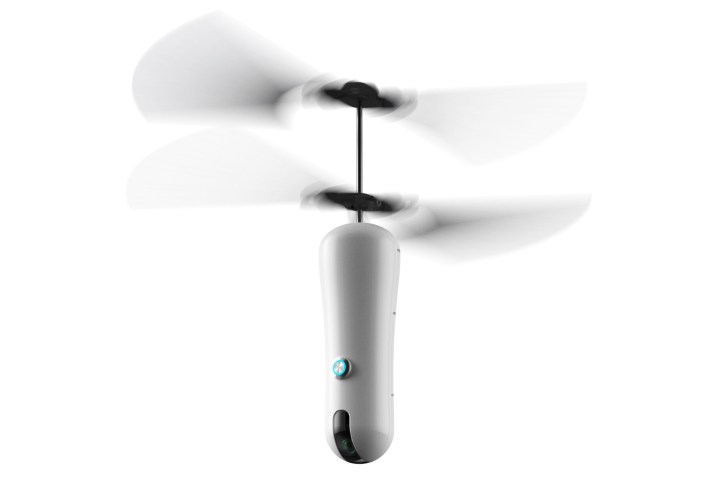
The ROAM-e drone is described as “a selfie stick on steroids” by IoT Group executive director Ian Duffell. Shaped like a water bottle to allow it to fit in big pockets and bags, the dual-blade cylindrical copper has a 5-megapixel CMOS camera and a quad-core ARM Cortex M4 processor that handles facial recognition and other flight computing tasks. It even has folding rotors that pack tightly for transport and storage. Because it carries a small camera and is designed to fly at low altitudes, the ROAM-e is on the compact side, measuring only 85mm at its widest point when folded.
The selfie drone can be connected to a smartphone and programmed to follow a user via its onboard facial recognition technology. The drone can track the user unassisted at a distance of up to 25 feet and circle the subject, providing a 360-degree panorama view. Like any well-behaved drone, the ROAM-e will hover in place if it loses sight of its target and will wait there until it sees its subject again. Besides autonomous selfies, users can obtain a more theatrical effect by dropping a point on the map and programming the ROAM-e to fly to that point and return. It also can stream live video to a connected smartphone or tablet during its 20-minute flight.
The ROAM-e is priced at a very reasonable $349 and is available now to order from IoT Group’s website. Orders placed now will deliver within 12 weeks.
Editors' Recommendations
- Forget AirTags. This backpack has Apple’s ‘Find My’ tech built directly into it
- FPV drone video of pro golf event has an incredible ending
- Drone pilot melts his machine for stunning volcano video
- U.K. has plans to create aerial drone zone superhighways to contain UAV traffic
- Portland bans private and public use of facial recognition tech




